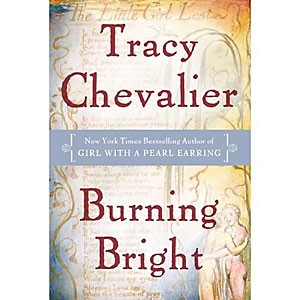Tracy Chevalier’s new novel “”Burning Bright”” has the depth of setting and colorful historical detail that she has become known for since her earlier novel, “”Girl with a Pearl Earring.”” The new book focuses on the 18th-century British poet William Blake and the people who may have inspired his writing.
The Kellaway family is the axle that the plot spins around. Having recently moved from the countryside, the Kellaways relocate to London so the father, Thomas, can work for a circus entrepreneur.
The Kellaway children provide the action in the plot, with their adventures and romantic interludes. The youngest Kellaway boy, Jem, falls for fiery, streetwise Maggie, who is without a doubt the most interesting character in the book.
The interactions between Jem and Maggie not only keep the story moving, but tie in the writings of William Blake. They represent the meeting of innocence and experience, as Maggie teaches farmboy Jem the ways of London, serving as a tour guide to the darker areas of town. This relationship is the theme of Blake’s aptly named work, “”Songs of Innocence and Experience,”” which is an attempt by Chevalier to incorporate Blake into the story a little more.
Most of the time, though, Blake fades into the background of the book. Blake’s connection with the Kellaway family is merely as an interesting neighbor, giving the boys advice at times. Chevalier includes numerous quotes from Blake, one in the title of her book from Blake’s line “”Tyger, tyger, burning bright,”” but these do not have the intrigue that perhaps she had hoped for.
Blake, as a character, does not fit well into the coming-of-age adventure story. He does, however, give insight into the political situation in Britain at the time.
Set in 1792, when King George III was worried the French Revolution would strike up a similar rebellion in Britain, we read of a Royalist mob roaming the streets trying to force people to sign loyalty oaths. Later, we follow Blake as he’s confronted over the fact much of his writing promotes liberty and equality, which the king does not approve of.
“”Burning Bright”” will no doubt be compared to “”Girl with a Pearl Earring,”” for both are fictional portraits of artists in a historical setting. However, Chevalier’s new novel simply does not have the same powerful plot necessary to draw the vivid descriptions together and keep the book alive until the end.
Though well-situated, the novel weakens as it goes along without a central concern to cling to. The atmosphere of bustling, smoggy Georgian London make it worth turning the page, but when you finish you will wonder what the point was.









